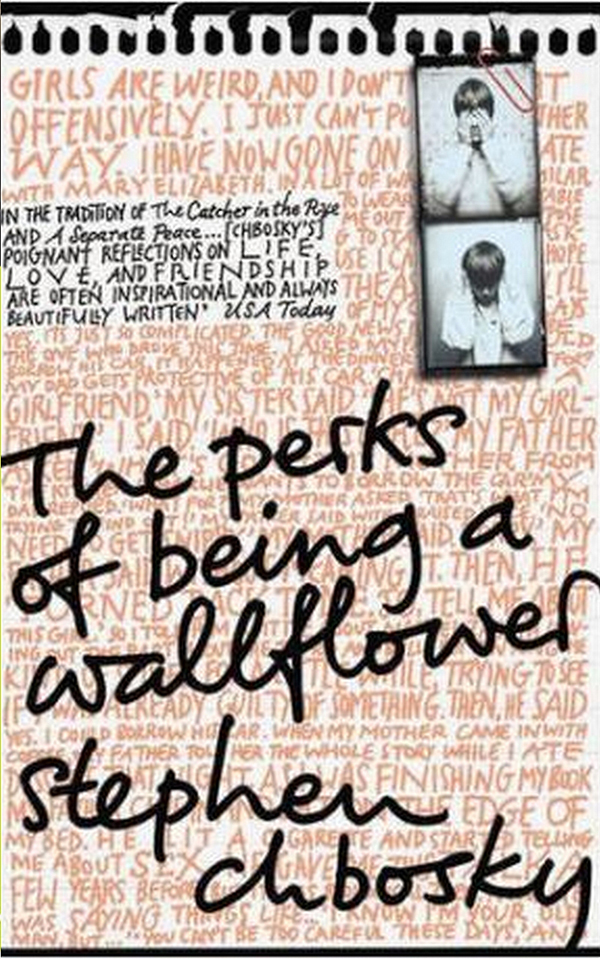“The Perks of Being a Wallflower” is an evocative literary masterpiece that catapults readers into the tumultuous world of adolescence through the introspective lens of its protagonist, Charlie. Set against the backdrop of high school impending trials and tribulations, Stephen Chbosky’s novel is more than just a coming-of-age story; it is a poignant exploration of the human condition, laden with metaphor and intricate characterizations.
From the outset, readers are introduced to Charlie, a perceptive yet enigmatic 15-year-old, navigating the chaotic waters of his teenage years. The narrative unfolds through an epistolary format, allowing readers to witness the intricacies of Charlie’s emotional landscape. His letters—both confessional and contemplative—create an intimate tableau that echoes the lingering resonances of isolation and belonging. This structure not only elevates the reader’s connection to Charlie but also accentuates the paradox of intimacy within detachment, a central theme throughout the novel.
The metaphor of being a “wallflower” encapsulates the essence of Charlie’s existence. Much like a wallflower that blooms in the shadows, Charlie is both an observer and a participant in the grand social ballet that is high school. He stands at the periphery, absorbing the vibrant tapestry of human interactions while simultaneously grappling with his internal battles. This duality—his passion for observing life and his somber introspection—brings to mind the contrast between light and shadow, a motif that permeates the narrative.
As Charlie navigates friendships, romances, and the overwhelming turbulence of adolescence, we encounter a diverse cast of characters that provide both solace and confusion. His friendships with Sam and Patrick serve as pivotal anchors in a sea of uncertainty. Sam, with her vivacious spirit, embodies the essence of authenticity; she is both a beacon of light and a source of heartache for Charlie. Patrick, equally memorable, presents the flamboyant exuberance of youth while confronting personal demons of his own. These relationships are painted vividly, each stroke contributing to Charlie’s holistic understanding of love, acceptance, and loss.
Moreover, the backdrop of music and literature throughout the book enriches the narrative, offering metaphoric significance that resonates deeply. The eclectic soundtrack of the characters’ lives—from classic rock to indie anthems—serves as both a comforting embrace and a clarion call for self-discovery. Each song resonates with a particular moment in Charlie’s journey, emblematic of emotions that are often inexpressible through mere words. The intertwining of art and life creates a rich tapestry where every note, every lyric, embodies a fragment of Charlie’s burgeoning identity.
As we delve deeper into Charlie’s psyche, we unearth profound themes of trauma and healing. The novel subtly interlaces threads of mental health, exposing the fragile fabric of Charlie’s mind. His struggles with depression and anxiety reveal a stark reality often glossed over in traditional narratives about youth. Chbosky brazenly confronts these issues, paving the way for dialogue surrounding mental well-being. By shedding light on Charlie’s internal turmoil, readers are invited to explore the often-hushed echoes of pain and resilience, culminating in a narrative that is not only relatable but heart-wrenching in its honesty.
Charlie’s journey is akin to a pilgrimage—a quest for self-discovery amidst a cacophony of external expectations and internalized fears. His experiences range from the euphoric heights of first love to the depths of existential despair, encapsulating the full spectrum of adolescent experience. Through this lens, the novel resonates profoundly, capturing the essence of what it means to grow, to falter, and to emerge anew. This cyclical notion of growth and revival is encapsulated in the metaphor of the dandelion; despite being perceived as a weed, it possesses an indomitable spirit that persists even in adversity.
In many ways, “The Perks of Being a Wallflower” serves as a mirror reflecting the universal struggles of young adults. The narrative transcends temporal boundaries, echoing the sentiments of those who have traversed the labyrinthine corridors of their formative years. Chbosky’s articulation of adolescent anguish coupled with moments of serendipitous joy crafts an authentic representation of youth—not as a monolith defined solely by its trials, but as a complex mosaic rich with potential and promise.
The book’s resolution offers a glimmer of hope, suggesting that healing is possible, even amid chaos. Charlie’s realization that he is not alone in his struggles serves as a profound reminder: we are all intricately woven into the tapestry of life, connected by invisible threads of shared experience. This understanding is the quintessential perk of being a wallflower—not merely existing in isolation but recognizing the beauty of the connections we forge with others.
In conclusion, “The Perks of Being a Wallflower” is an enchanting exploration of adolescence, deftly navigating the ebbs and flows of emotional turmoil and exuberance. Through Charlie’s letters, readers are invited not just to witness, but to feel—transforming the experience of reading into a collective journey of self-exploration and connection. It is a compelling reminder that while being a wallflower may mean observing from the sidelines, it does not diminish the vibrant, complex symphony of life that flows all around us.
